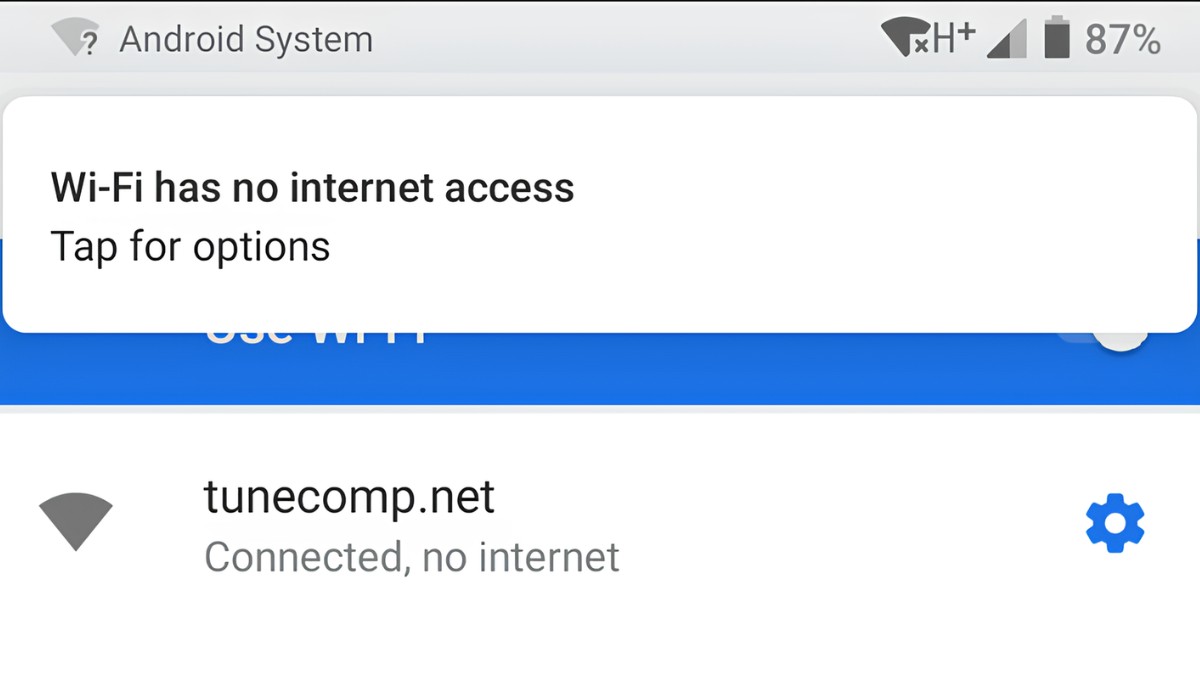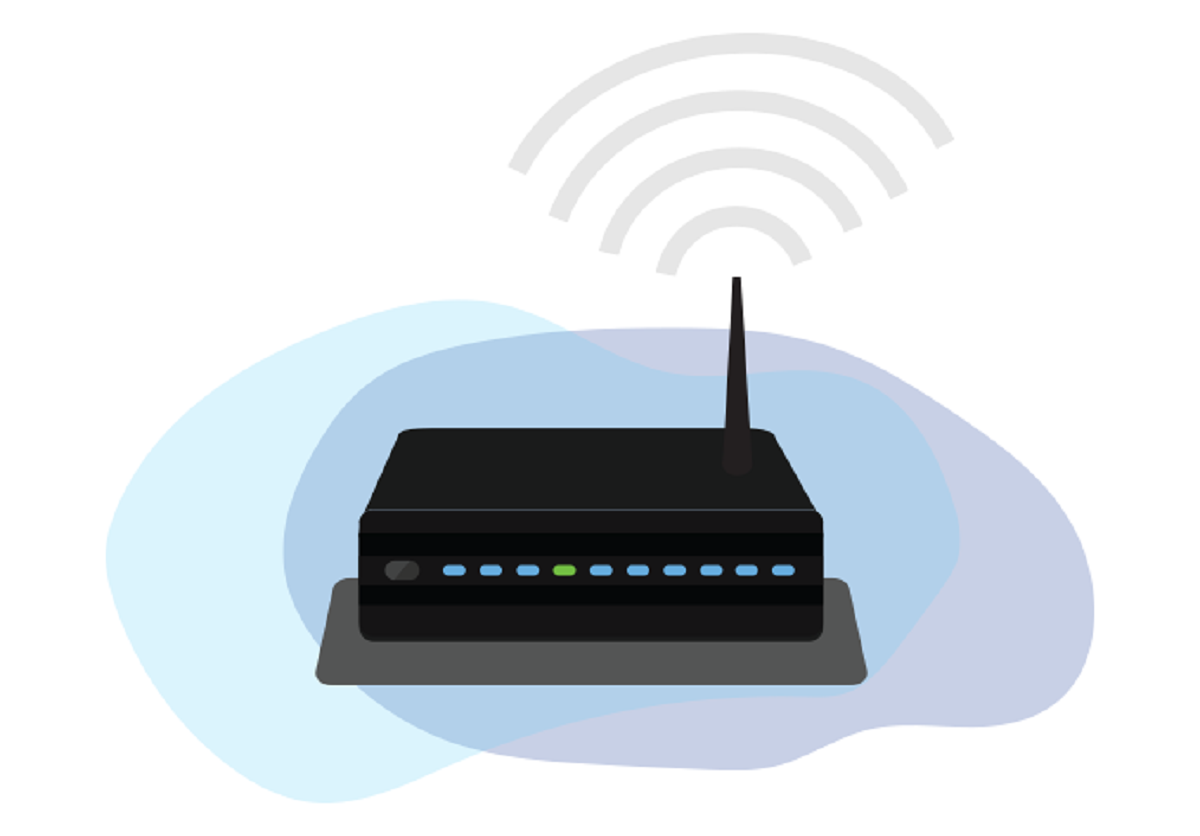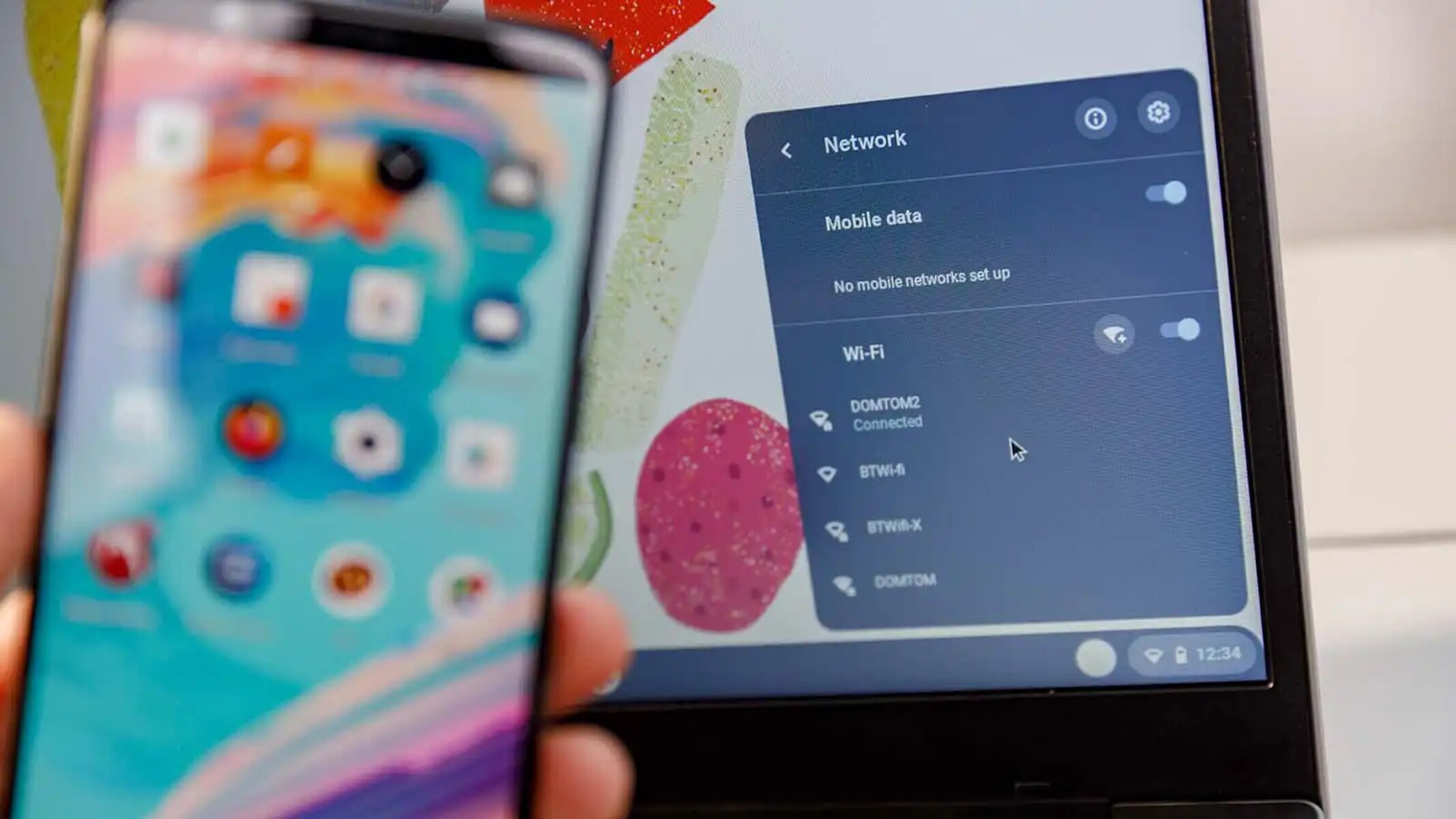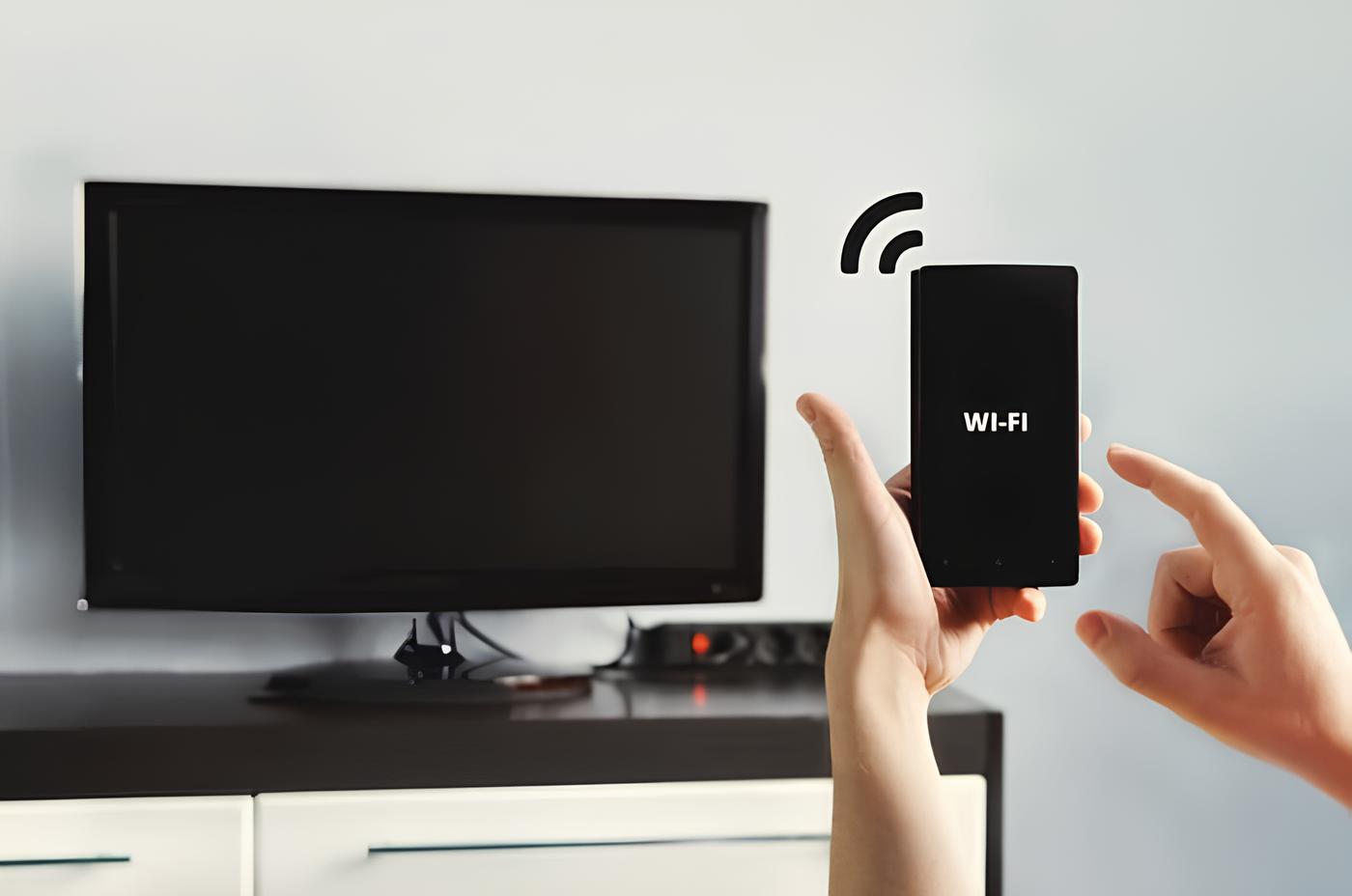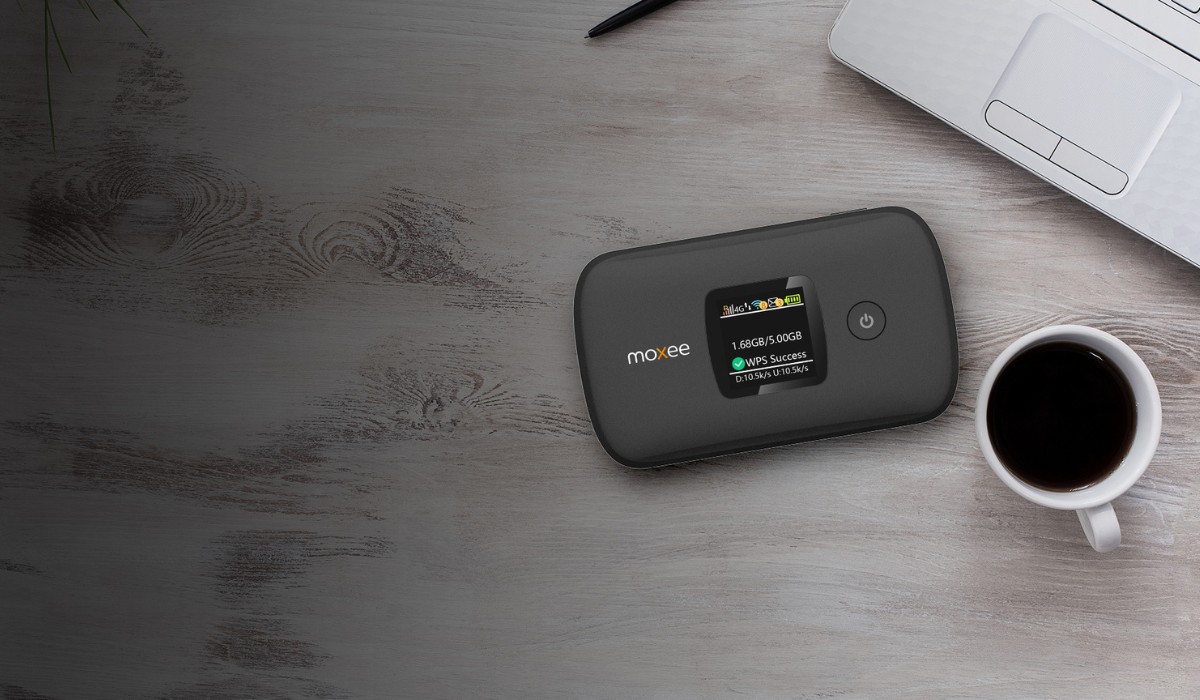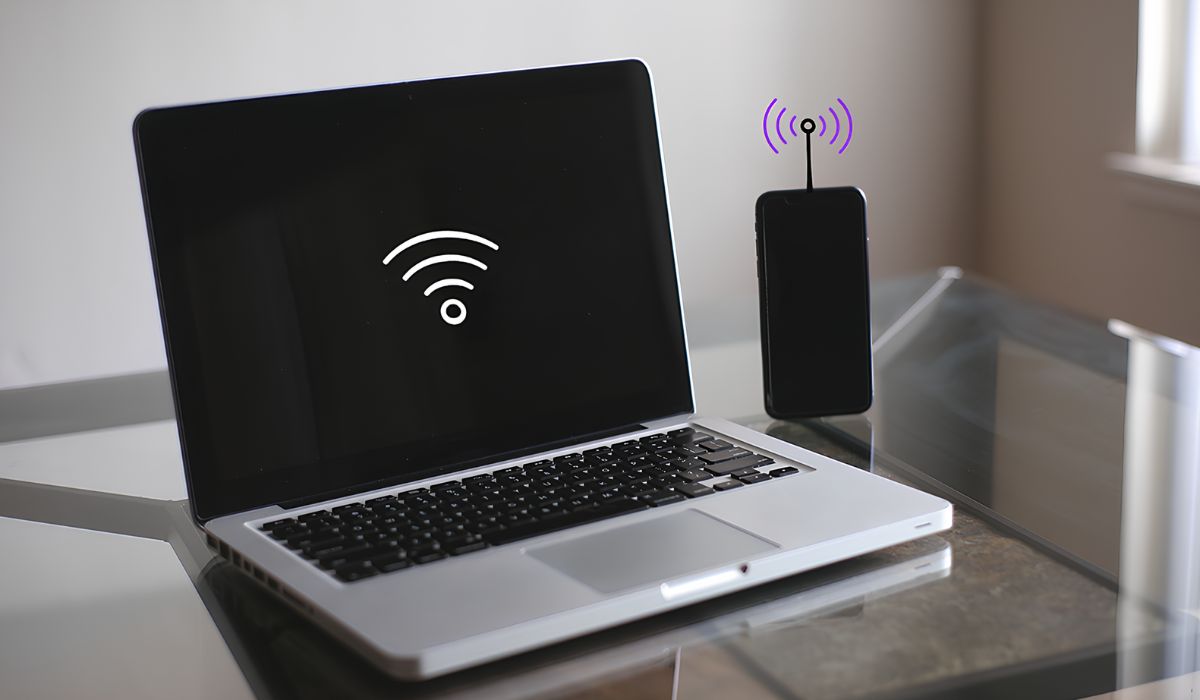Introduction
In today's digital age, staying connected to the internet is crucial for both personal and professional endeavors. Whether you're working remotely, streaming your favorite shows, or simply browsing the web, a reliable internet connection is indispensable. However, there are instances when the "No Internet" message appears on your hotspot, disrupting your online activities. This can be frustrating, especially when you're relying on the hotspot for essential tasks.
Understanding the common causes behind this issue and learning effective troubleshooting techniques can help you swiftly resolve the "No Internet" hotspot message. By delving into the intricacies of device settings, hotspot configurations, and network connectivity, you can regain seamless access to the online world. This article aims to guide you through the troubleshooting process, providing practical tips and insights to address this connectivity issue.
Whether you're using a smartphone, tablet, or dedicated hotspot device, encountering the "No Internet" message can be perplexing. It's essential to approach the situation with a systematic troubleshooting mindset, taking into account both the hardware and software aspects of your device. By following the steps outlined in this article, you can navigate through potential obstacles and restore your hotspot's internet functionality.
In the subsequent sections, we will explore various troubleshooting methods, including checking device settings, restarting your device, reviewing hotspot configurations, updating device software, resetting network settings, and seeking assistance from your service provider. Each of these approaches offers a valuable opportunity to identify and rectify the underlying issues contributing to the "No Internet" hotspot message.
By gaining a comprehensive understanding of these troubleshooting techniques, you can empower yourself to overcome connectivity challenges and optimize your hotspot's performance. Let's embark on this journey of troubleshooting and problem-solving, equipping ourselves with the knowledge and strategies needed to conquer the "No Internet" message and reclaim uninterrupted internet access.
Check Device Settings
When encountering the "No Internet" hotspot message, the first step is to meticulously examine the device settings to pinpoint potential issues. Start by ensuring that the device's Wi-Fi or hotspot feature is activated. Sometimes, accidental deactivation of these features can lead to connectivity disruptions. Navigate to the device's settings menu and verify that the Wi-Fi or hotspot functionality is enabled.
Next, confirm that the device is connected to the correct hotspot network. It's not uncommon for multiple hotspots to be available in a given location, and inadvertently connecting to the wrong network can result in the "No Internet" message. Double-check the network name (SSID) and ensure that the device is linked to the intended hotspot.
Additionally, assess the device's network settings to ascertain whether any manual configurations are impeding connectivity. If the device has custom DNS or proxy settings, consider reverting to the default automatic settings to eliminate potential conflicts that may be contributing to the "No Internet" issue.
Furthermore, evaluate the device's battery-saving or power management settings, as these features can sometimes restrict network access to conserve energy. Adjusting these settings to prioritize network connectivity can alleviate the "No Internet" message.
In some cases, outdated or corrupted network configurations can impede internet access. By resetting the device's network settings to their default state, you can potentially resolve underlying connectivity issues. This process varies across different devices, but it generally involves navigating to the device's settings, accessing the network or connectivity options, and selecting the option to reset network settings.
Lastly, consider examining the device's system logs or diagnostic tools to identify any error messages or irregularities related to network connectivity. These logs can provide valuable insights into the underlying causes of the "No Internet" message, enabling you to address specific issues based on the diagnostic information.
By meticulously reviewing and adjusting the device settings, you can proactively address potential obstacles that may be triggering the "No Internet" hotspot message. This methodical approach allows you to methodically eliminate common connectivity barriers and optimize the device's network configuration for seamless internet access.
Restart Your Device
Restarting your device is a fundamental yet remarkably effective troubleshooting technique when confronted with the "No Internet" hotspot message. This simple yet powerful action can alleviate a wide array of connectivity issues, providing a swift and uncomplicated solution to the predicament at hand.
When a device is in operation for an extended period, various background processes, network configurations, and system components may encounter irregularities or become unresponsive, leading to connectivity disruptions. Restarting the device allows these elements to reset and initialize anew, potentially resolving underlying issues that contribute to the "No Internet" message.
To initiate a device restart, simply power off the device using the designated hardware or software controls. After the device has completely powered down, wait for a brief interval to ensure that all active processes and components have ceased operation. Subsequently, power the device back on, allowing it to undergo the boot-up sequence and resume normal functionality.
Upon restarting, the device undergoes a comprehensive reset, clearing temporary data, refreshing system components, and reestablishing network connections. This process can rectify transient software glitches, memory leaks, or network interface inconsistencies that may impede internet access.
Furthermore, a device restart facilitates the synchronization of network configurations, ensuring that the device effectively communicates with the hotspot and establishes a stable internet connection. In some instances, the restart process can resolve conflicts between the device's software and the hotspot's settings, fostering harmonious interaction and seamless data transmission.
It's important to note that the benefits of restarting a device extend beyond resolving immediate connectivity issues. Regularly restarting your device can help maintain optimal performance, mitigate software instability, and promote efficient resource utilization, ultimately contributing to a more reliable and responsive user experience.
In essence, the act of restarting your device serves as a fundamental troubleshooting measure, offering a straightforward and impactful remedy to the "No Internet" hotspot message. By embracing this proactive approach, you can swiftly address connectivity challenges and restore uninterrupted access to the online realm, empowering you to seamlessly resume your digital activities.
Check Hotspot Settings
When troubleshooting the "No Internet" hotspot message, a critical aspect to consider is the configuration and settings of the hotspot itself. By delving into the hotspot settings, you can identify potential misconfigurations or irregularities that may be impeding internet access for connected devices.
Begin by accessing the hotspot's administrative interface, which is typically achieved by entering a specific IP address or web domain in a web browser while connected to the hotspot network. Once within the interface, review the network settings to ensure that the hotspot is operational and transmitting data effectively.
Verify that the hotspot's internet connection is active and stable. This involves confirming that the hotspot device is successfully linked to an external internet source, such as a cellular network or another Wi-Fi network. If the hotspot's upstream internet connection is disrupted, it can propagate the "No Internet" message to connected devices, necessitating a resolution at the hotspot level.
Next, examine the network security and encryption settings of the hotspot. Ensure that the security protocols, such as WPA2 or WPA3, are appropriately configured to safeguard data transmission while allowing seamless connectivity for authorized devices. Additionally, review the passphrase or security key associated with the hotspot to confirm its accuracy and integrity.
Consider adjusting the hotspot's channel and frequency settings, especially in densely populated or congested wireless environments. By selecting an optimal channel and frequency band, you can mitigate interference and enhance the overall stability and performance of the hotspot network, potentially alleviating the "No Internet" message for connected devices.
Furthermore, assess the DHCP (Dynamic Host Configuration Protocol) settings of the hotspot to ensure that it can effectively assign IP addresses to connected devices. An inadequate DHCP configuration can lead to IP address conflicts or allocation issues, hindering the establishment of a seamless network connection.
In addition to these technical considerations, it's beneficial to inspect the physical placement and environmental factors surrounding the hotspot device. Ensure that the hotspot is positioned in an area with adequate signal reception and minimal obstructions to optimize wireless coverage and signal strength.
By meticulously examining and adjusting the hotspot settings, you can proactively address potential network-related issues that contribute to the "No Internet" message. This methodical approach empowers you to fine-tune the hotspot's configuration, fostering a robust and reliable wireless network that facilitates uninterrupted internet access for connected devices.
Update Device Software
Updating the device software is a pivotal step in troubleshooting the "No Internet" hotspot message, as outdated or flawed software can lead to compatibility issues, security vulnerabilities, and network connectivity disruptions. By ensuring that the device's operating system, firmware, and network-related software components are up to date, you can mitigate potential software-related impediments and optimize the device's ability to establish a seamless internet connection.
Commence the update process by navigating to the device's settings menu and accessing the system or software update section. Depending on the device type and operating system, this may be located within the "About" or "General" settings category. Check for available software updates and initiate the download and installation of any pending updates.
Software updates often encompass a diverse range of enhancements, including bug fixes, performance optimizations, and security patches. These updates can address underlying software irregularities that may be contributing to the "No Internet" message, rectifying network interface issues, protocol inconsistencies, or compatibility conflicts with the hotspot device.
In addition to the device's core operating system updates, it's imperative to ensure that the firmware and drivers associated with the device's wireless connectivity components are also kept current. This includes updates for Wi-Fi adapters, cellular modems, and hotspot-specific firmware, if applicable. These updates can introduce crucial improvements in wireless communication protocols, signal processing algorithms, and network stack functionality, bolstering the device's capability to establish and maintain a robust connection to the hotspot.
Moreover, software updates often incorporate refinements in network stack implementations, DNS resolution mechanisms, and network interface management, which can directly influence the device's ability to seamlessly interact with the hotspot and access the internet. By embracing the latest software updates, you equip the device with the necessary enhancements to navigate potential network obstacles and ensure reliable internet connectivity.
Regularly updating the device's software not only addresses immediate connectivity issues but also fortifies the device's overall stability, security, and performance. It's a proactive measure that fosters a resilient and responsive digital ecosystem, enabling you to harness the full potential of your device's connectivity features while minimizing the impact of software-related impediments on your internet experience.
By prioritizing the update of device software, you lay a solid foundation for sustained connectivity and empower the device to effectively engage with the hotspot, transcending potential software-related barriers and fostering a seamless internet experience.
Reset Network Settings
Resetting the network settings on your device can serve as a potent troubleshooting measure when grappling with the persistent "No Internet" hotspot message. This approach involves reverting the device's network configurations to their default state, effectively eliminating potential irregularities, conflicts, or corrupted settings that may impede internet access. By initiating a network settings reset, you embark on a comprehensive recalibration of the device's network parameters, aiming to restore seamless connectivity and optimize the interaction with the hotspot.
The process of resetting network settings varies across different devices and operating systems. Typically, this functionality is accessible within the device's settings menu, often under the "Network," "Connections," or "General Management" section. Upon locating the network settings reset option, the device prompts the user to confirm the action due to its impactful nature.
Upon executing the network settings reset, the device undergoes a systematic reconfiguration of its network-related parameters. This encompasses the restoration of default Wi-Fi, Bluetooth, cellular, and VPN settings, as well as the clearing of cached network data and the removal of custom DNS or proxy configurations. By reverting to the default network state, the device effectively eliminates potential inconsistencies or misconfigurations that may hinder the establishment of a stable internet connection.
The network settings reset also encompasses the removal of saved Wi-Fi networks and their associated credentials. This action necessitates re-establishing connections to Wi-Fi networks, including the hotspot, from a clean slate. While this may initially require re-entering Wi-Fi passwords and reconfiguring network-specific settings, it offers a fresh start for the device's network interactions, potentially resolving persistent connectivity issues, including the "No Internet" hotspot message.
It's important to note that initiating a network settings reset entails a comprehensive reinitialization of the device's network configurations, necessitating a brief period for the device to adapt to the restored settings. During this adjustment phase, the device synchronizes with the hotspot's network parameters, aiming to establish a harmonious and effective connection that ensures seamless internet access.
By embracing the network settings reset as a troubleshooting strategy, you proactively address potential network-related impediments, empowering the device to engage with the hotspot in a streamlined and optimized manner. This methodical recalibration of the device's network configurations offers a valuable opportunity to transcend connectivity challenges and restore uninterrupted internet access, fostering a seamless and responsive digital experience.
In essence, the network settings reset represents a decisive step towards resolving the "No Internet" hotspot message, providing a robust foundation for sustained connectivity and empowering the device to navigate potential network obstacles with enhanced agility and effectiveness.
Contact Your Service Provider
In the pursuit of resolving the persistent "No Internet" hotspot message, reaching out to your service provider emerges as a pivotal recourse, offering valuable insights, technical support, and potential interventions to address the connectivity predicament. The service provider, equipped with specialized knowledge and resources, can collaborate with you to diagnose and rectify underlying network issues, ultimately fostering a seamless and uninterrupted internet experience.
Initiating contact with your service provider enables you to articulate the specific challenges you're encountering with the hotspot's internet connectivity. By elucidating the symptoms, error messages, and contextual details surrounding the issue, you provide the service provider with a comprehensive understanding of the situation, facilitating targeted troubleshooting and resolution efforts.
Upon engaging with your service provider, you gain access to a spectrum of support channels, including dedicated technical support hotlines, online chat platforms, and in-person assistance at service centers. These avenues serve as conduits for articulating your connectivity concerns and soliciting expert guidance tailored to your specific device, network environment, and service plan.
The service provider's technical support team possesses the expertise to conduct remote diagnostics, analyze network performance metrics, and evaluate potential service disruptions that may impact the hotspot's internet functionality. Leveraging this technical acumen, the support team can collaboratively explore potential network infrastructure issues, service outages, or account-related discrepancies that may underpin the "No Internet" message.
Furthermore, the service provider may offer tailored guidance on optimizing the device's network settings, configuring the hotspot for optimal performance, and addressing compatibility nuances between the device and the service provider's network infrastructure. This proactive guidance empowers you to fine-tune the device's connectivity parameters and align them with the service provider's network specifications, fostering a harmonious and effective interaction that mitigates the "No Internet" message.
In scenarios where the issue transcends individual device or network settings, the service provider can orchestrate targeted interventions, such as provisioning network profile updates, addressing service provisioning discrepancies, or conducting network infrastructure maintenance to restore seamless internet access for the hotspot.
By fostering a collaborative partnership with your service provider, you embark on a journey of collective problem-solving, leveraging the provider's expertise and resources to navigate and conquer the connectivity challenges. This collaborative approach not only addresses the immediate "No Internet" hotspot message but also fortifies the device's connectivity ecosystem, ensuring sustained and optimized internet access aligned with the service provider's network standards.
In essence, contacting your service provider represents a pivotal step towards harnessing specialized support, technical insights, and targeted interventions, culminating in the resolution of the "No Internet" hotspot message and the cultivation of a robust and reliable internet connectivity experience.







